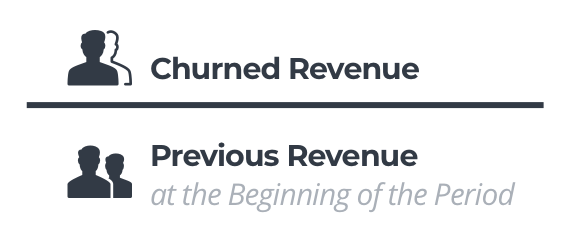Aligning your support agent goals with company revenue goals like churn reduction can create a measurable difference.
Your agents are just one piece of the puzzle that makes up your company. But if the pieces don’t fit together, you’ll end up with a disjointed picture, rather than a harmonious company vision. Aligning your support agent goals with your company’s goals is important for two reasons.
First, agents will be more motivated and their work will feel more rewarding when they see how their goals help the business succeed. By tying their own success with the success of their business, they can picture how they make a difference. Secondly, to be successful, everyone in the business needs to be rowing in the same direction. If every department is working towards the same goal, you’ll achieve it much faster than if each team is setting their own disjointed goals.
In order to align your team with your company’s goals, let’s look at two main ways that agent goals can be tied to your company’s big picture objectives: reducing churn rates and improving brand perception. Your support, sales, and marketing teams are essential messengers for how customers build their opinions of your brand or product. The following article will further detail these elements, how they factor into the larger scheme of things, and the importance of always keeping them in mind.
 Putting Brand Perception on the Front Line
Putting Brand Perception on the Front Line
Your brand’s perception involves the company’s message and its delivery. A Bain and Company study showed that while 80% of companies believe they provide a great experience, only around 8% of customers feel the same. In the United States, despite the love for a product, 59% of customers said they would walk away from a company after several unfavorable support interactions, and 17% after just one.
Some of this perception comes directly from support interactions. However, customers are often making judgment calls long before they get to the support lines themselves. Reviews can play a huge role in how customers perceive a product or brand. Think of how many times you scrolled past a two-star product for the “user’s choice” option, regardless of how accurate those reviews may be. It may be practical or a placebo, but the effect is nonetheless a potent one. 90% of consumers have based a purchasing decision on customer reviews.
You can effectively control your brand’s messaging towards your customers to generate a bond. Forging this bond can be done by curating a brand personality representing your vision, mission, or culture, creating a more profound, visceral connection to your customer base over that of a cold and straightforward transaction. And this bond will pay off! Yotpo found that 60% of customers are likely to try a brand or product recommended by someone they trust. Furthermore, if they like it, 39.4% of customers will spend significantly more on a product even if there are cheaper options available.
 How Support Shapes Brand Perception
How Support Shapes Brand Perception
Often, support channels are where teams unearth the product or a platform’s pain points, and your support team is the most direct point of contact between the brand and your customers. Therefore, your customers’ opinions can be shaped quickly, sometimes resolutely, based on that interaction.
A customer may forgive one bad customer support interaction if they receive a proper apology. Yet, a consistent string of underwhelming exchanges indicates a pattern that can be a perceived reflection of the company’s priorities or values.
Telling agents and reps that their behavior should reflect the larger ideal is not enough. It takes translating complex strategy language into an everyday discourse about execution— in other words, allowing agents to see their work incorporated into the larger scheme. Being on the same page when it comes to values can make all the difference. They need to feel heard and appreciated for their work in the trenches.
Turn Brand Perception Into Support Agent Goals
Break your brand into replicable pieces: What is your brand? How does it relate to your customer experience? Are you knowledgeable? Fast? Funny and charming? Each of these different aspects can be turned into support agent goals.
Set goals: Depending on your brand aspects, set agent goals that will help you deliver the brand experience you’re looking to create. Here are a few examples:
- Create more training sessions to improve industry and product knowledge for agents
- Reduce first reply time to improve the perception of “speed”
- Update macros to be more on-brand.
Measure your success: keep track of your support team’s CSAT (customer satisfaction survey) scores. It is a standard metric used for support that utilizes the S.M.A.R.T. (specific, measurable, attainable, relevant, time-based) goal setting structure and can help you understand your customers’ current brand perception.
 Get Their Retention: Churn Prevention
Get Their Retention: Churn Prevention
Whereas customer satisfaction and brand perception handles more of the emotional concept of service goals, learning your churn rates is where the hard numbers come in. What are you doing in customer support that makes your customers stick around for the long haul? Aligning your agent goals with company revenue goals like churn reduction can create a measurable difference.
Why is churn important? Well, typically, it costs a company 16 times more to bring in a new customer to the level of an existing one. Think of it like making friends outside of college. It’s always going to be easier to maintain the friendships you have than to make new ones.
Usually, people referring to churn are talking about the customer, or user, churn, but revenue churn is another variety that requires attention. On the surface, they might seem interchangeable, but that is not the case. Customer churn is the rate at which you lose customers, while revenue churn measures the actual income you’re losing due to downgrades or lost subscriptions in a specific timeframe. Revenue churn is a vital metric as you grow because it has a more considerable effect on your business than customer churn. Although all customers are important, there is a big difference between losing a $5 subscriber to a $500 one. Generally, anywhere between a 5-7% revenue churn is considered a “healthy” monthly rate.
Doing the math
Customer churn rate can be calculated using this formula:
[ Lost Customers in X Period of Time / (#) Total customers at the start of this time period ] X 100 = (%) Customer Churn Rate

The formula for revenue churn (RR):
Churned Revenue / Previous Revenue at the beginning of the Period = Revenue Churn Rate

For example: You start the year with $100,000 in revenue from existing customers. You lost $10,000 of that over the course of the year due to user loss. You gained back $2,000 from existing customers who upgraded their service. Then, your net revenue lost is $8,000, otherwise stated as a churn rate of 8%.
 Turn Churn Reduction into Agent Goals
Turn Churn Reduction into Agent Goals
There are a few strategic moves you can make to improve your churn besides the organic nature of a dynamite product and a stellar team. By taking the pain points discovered through your support channels, you can develop upgrades or new products to fit or fix those points. Reducing churn is a reactionary process, but the best way to tackle the problem is to prevent churn through proactive measures, looking at the underlying causes, and addressing them.
Example goals:
- Identifying common causes of customer churn.
- Reaching out to customers who are at risk of churning.
- Suggesting valuable upgrades to customers to increase overall revenue.
- Creating prioritization rules for at-risk customers to get help faster.
 A Good Blend of Customer Support Goals
A Good Blend of Customer Support Goals
Having a clearly defined set of company values can form which agent goals get prioritized on a day-to-day basis, but the same is true of agent goals leading to adjustments in the larger company picture. Inspecting and evaluating churn rates gives you the hard numbers of your business as a whole over some time. CSAT scores will show the work of the why and how you got there. These goals will show that the proof is indeed in the brand’s pudding, setting you up for successful growth.









